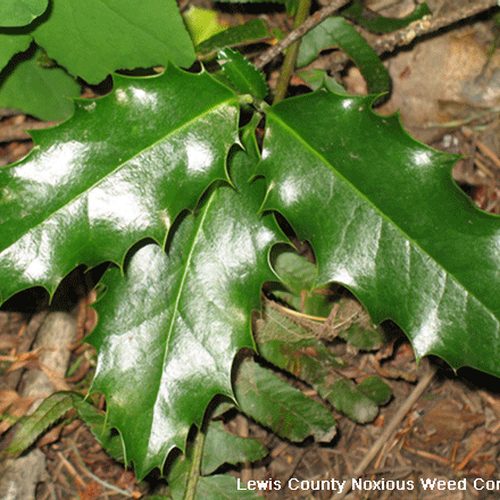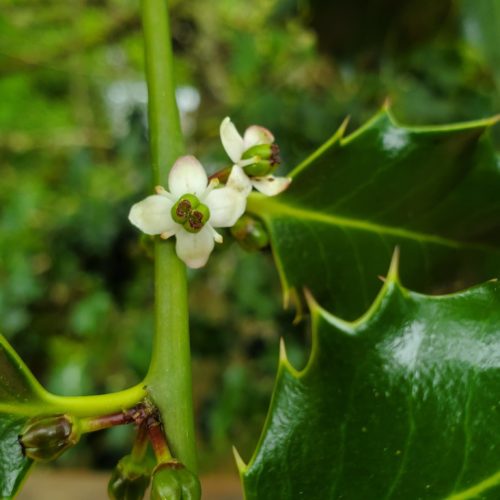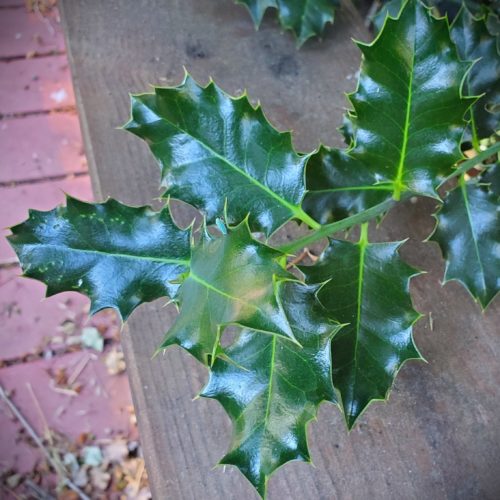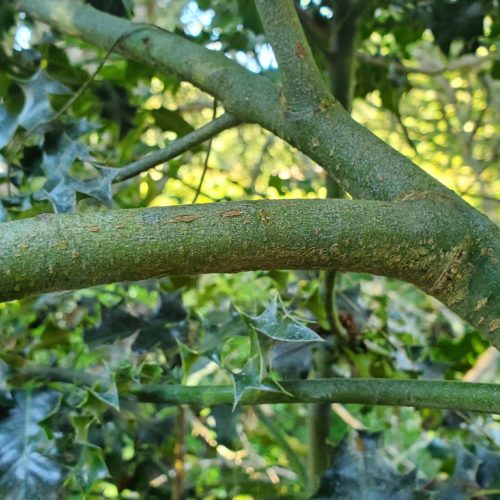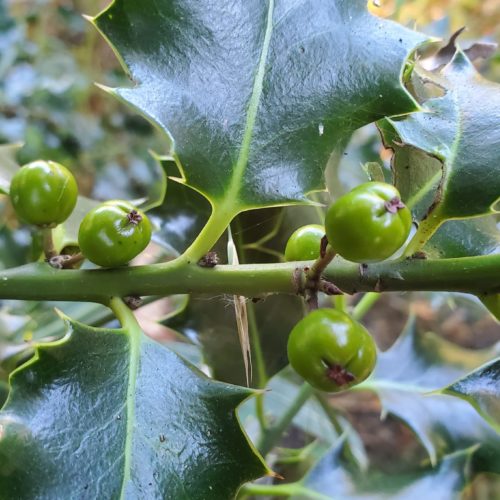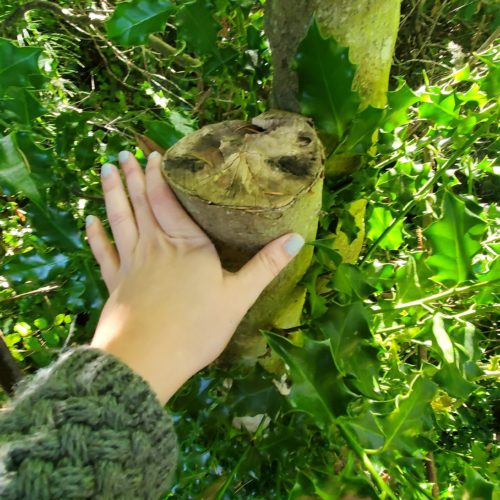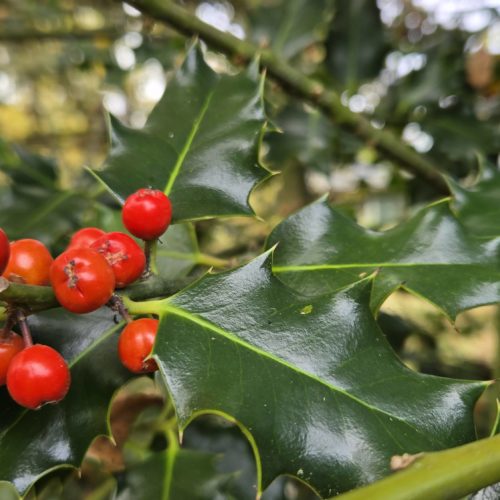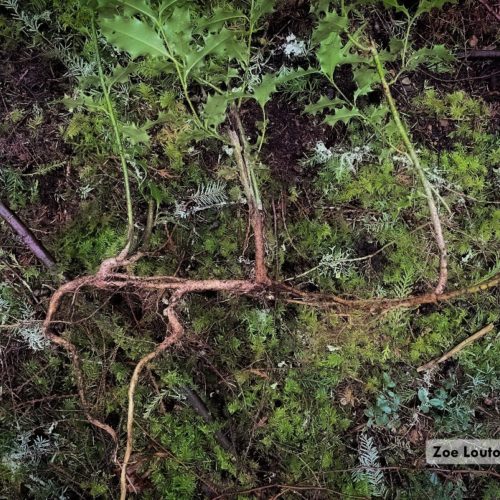Common Holly
Ilex aquifolium
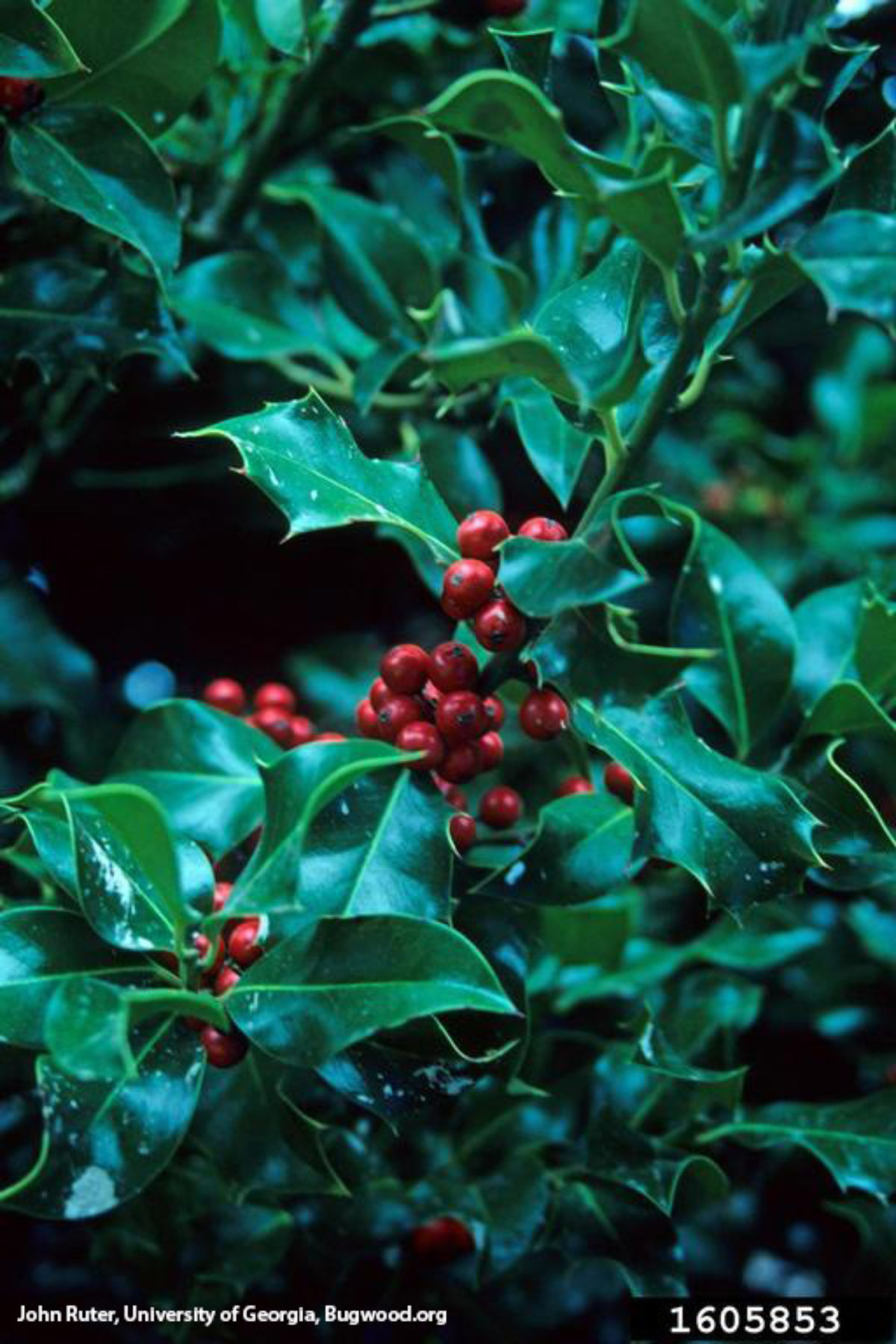
Family: Aquifoliaceae
Other Common Names: English holly, wild holly, feral holly, Christmas holly
Weed class: C
Year Listed: 2025
Native to: Asia, Europe and Northern Africa
Is this Weed Toxic?:
humans
Legal listings:
As a Class C weed, holly is not required for control in Washington State, unless a county selects it for control at the county level. It is also allowed to be sold in and from Washington.
Why Is It a Noxious Weed?
Holly is a legacy crop in Washington, and has been grown for over 100 years! It is a valuable crop with a lot of cultural significance and practical uses, such as a hedgerow plant. Holly has an important place in Washington's agriculture and our history. To learn more about holly in the Pacific Northwest, see the Northwest Holly Growers Association's website.
Holly is a nuisance plant when it grows in unwanted places, such as Washington's forests, where it spreads throughout the understory, displacing native species. Even though it shows invasive qualities in Washington forests, it is responsibly grown and used by Washington holly growers and their customers. To learn more about the heritage of holly in Washington, read this Douglasia article!
How would I identify it?
General Description
This shrub can get as tall as 30 feet, and can dominate the understory of Washington's native forest stands.
Flower Description
Female plants have small, white to light green flowers that have 4 round petals. Male plants non-descript light green to white round shapes with 4 anthers coming from the center. All the flowers grow individually and directly from the branches, on very short stems.
Leaf description
Holly's leaves are lobed, ending in sharp points. They are deep green and covered in a waxy coating.
Stem description
Thick, woody stems that start off olive green and can age to brown green.
Fruit Seed Description
Bright, red berries, which are popular with birds.
May Be Confused With
Our native Oregon grape species also have spiny leaves and tend to grow in forest understory. Even tall Oregon grape does not get nearly as tall as holly does. All Oregon grape species have yellow flowers and make blue to black berries. The spines on holly leaves tend to alternate between pointing up and pointing down, while Oregon grape leaf spines all point out or up.
Where does it grow?
Healthy and disturbed forest understories, riparian areas, and shady areas throughout Western Washington, in a variety of soil types. Will produce more seed when exposed to light. Click here to see an informal map of known common holly locations in Washington as of August 2024.
How Does it Reproduce?
Seed spread by birds, as well as vegetatively, when stems and branches have access to moist soil.
How Do I Control It?
Young plants can be pulled out, but mature shrubs are very difficult to control. Cutting will result in the stem or stump sprouting. Herbicide can be effective when used over many years, but the expensive injection method is the most effective.
Please refer to the PNW Weed Management Handbook, or contact your county noxious weed coordinator.
For More Information
Whatcom County NWCB Fact Sheet on feral holly
English Holly (Ilex aquifolium) Herbicide Treatment Study by EarthCorps
King County Noxious Weed Program Best Management Practices for feral holly
Control Options for holly from Whatcom County NWCB
Article: Pictures of an invasion: English holly (Ilex aquifolium) in a semi-natural Pacific Northwest forest
City of Portland, OR information on holly
Our written findings on feral holly



